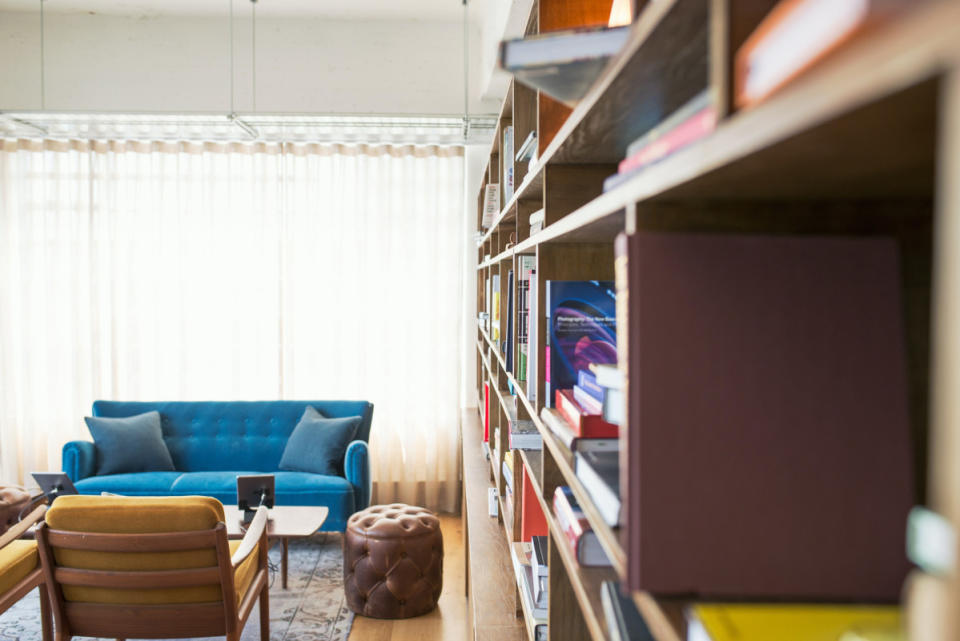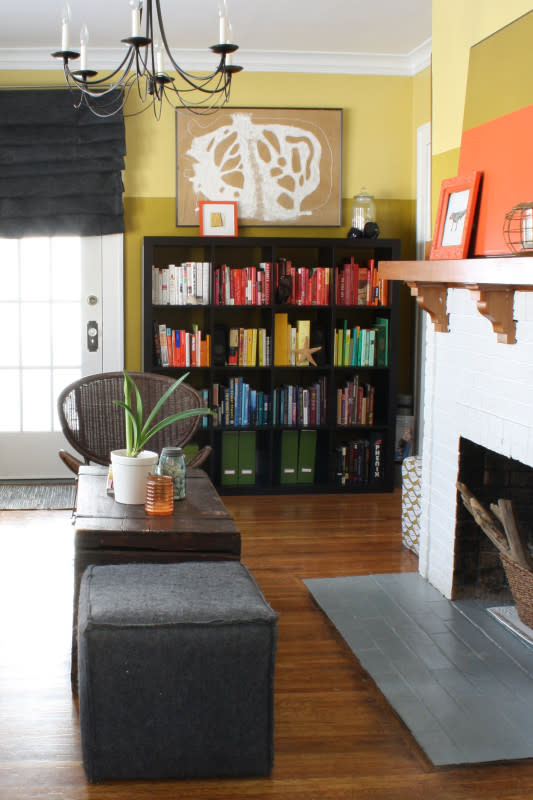The Best Way to Organize a Home Library
Men’s Journal aims to feature only the best products and services. If you buy something via one of our links, we may earn a commission.
Transforming your home library into an organized haven not only enhances its visual appeal but also makes finding and enjoying your favorite books a breeze. Whether you're an avid reader or simply love the idea of a cozy reading nook, the best way to organize your personal library involves a thoughtful approach.
From sorting and categorizing to incorporating decorative elements, curate a space for yourself that's both functional and aesthetically pleasing. With a little planning and creativity, your stacks of books can become a sanctuary for literary adventures and a reflection of your unique style.
1. Evaluate Your Space and Collection
Assess your available space. Consider factors like shelf dimensions, vertical space, room layout, storage options, and who will be using this library.
Take stock of your book collection. Determine if there are any you'd like to donate, sell, or relocate to another room.
2. Sort by Genre or Category
Organize your books into broad categories such as fiction and non-fiction, by genre, by age group, subject matter, or frequency of use.
Fiction: | Non-Fiction: |
Children and Young Adult: | Hobby: |
Poetry: | Reference: |
3. Alphabetize or Use a System
Within each category, alphabetize books by the author's last name or use another systematic approach that makes sense to you. Consider organizing non-fiction books by topic or subject.
Along with keeping track of your personal collection on the go, you can use a popular cataloging app to scan your collection's barcodes to find your favorite organizational system
Related: The Motivation You Need to Conquer Your Junk Drawer
4. Consider Size and Aesthetics
Arrange books of similar size together. This step is especially important for visual appeal, as it creates a neater appearance through a more cohesive and organized look on your shelves.
You can also organize by color or another aesthetic. It's your space, do what you want.
5. Utilize Adjustable Shelving
If possible, use adjustable shelves to accommodate different book sizes. This flexibility allows you to customize the space based on your collection.
6. Create Reading Zones
Designate specific areas for different types of reading materials. For instance, reserve one section for novels, another for reference books, and another for children's literature.
If space allows, designate a cozy reading nook within your home library. Include comfortable seating, good lighting, a cozy blanket, and perhaps a small table for your favorite beverage.
Tip: If you have ever wanted to create a magical children's book nook, this is a great time!

Photo by Ben Garratt on Unsplash
7. Incorporate Decorative Elements
Enhance the visual appeal of your home library by incorporating decorative elements. Bookends, plants, or framed artwork can break up the monotony of bookspines and add character to the space.
8. Implement Storage Solutions
For multi-use elements, consider using baskets, bins, or decorative boxes for smaller items, such as magazines, journals, or loose papers. This helps maintain a clean and organized look.
9. Use Labels or Tags
For larger collections or extensive genres, consider labeling shelves or using tags to make it easier to find specific books.
10. Leave Room for Growth
Leave some space on your shelves to accommodate new additions to your collection. This prevents overcrowding and allows for easy reorganization.
Periodically review and update your collection. Remove books you've read or no longer wish to keep, and adjust your organization as needed.
Pros and Cons of Organizing Books by Color
Sorting books by cover color can give your shelves a cool vibe and has the potential to transform a room. But, it's not exactly a one-size-fits-all system and the actual process of living with a rainbow of bookshelves might be best suited to particular book displays.

Emily Fazio
Pros:
Visual Appeal: Organizing books by color turns them into decor pieces that can turn your bookshelves into a vibrant and eye-catching display, adding a decorative element to your space.
Artistic Expression: It allows you to express your creativity and design sensibilities, turning your home library into a visually curated space.
Ease of Styling: Color coordination can make it simpler to match your bookshelves with the overall color scheme and decor of the room.
Cons:
Finding Specific Books: It's not a perfect organizational process as locating a particular book might be challenging when books are not arranged by author, title, or subject.
Practicality: It may not be the most efficient option if you frequently reference or lend books, as it lacks the systematic organization of more traditional methods.
Changing Collections: If you frequently add or remove books from your collection, maintaining color coordination may require constant adjustment.

